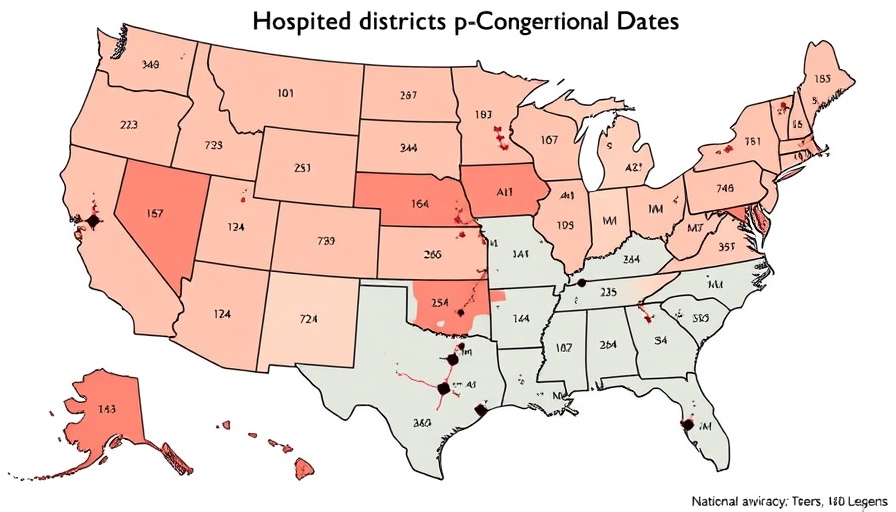
Mapping Hospitals by Congressional District: A Crucial Look at Access to Care
As nationwide discussions continue over potential Medicaid cuts reaching $880 billion in the next decade, the implications for hospitals are profound. Medicaid currently accounts for nearly one-fifth of all hospital spending in the U.S., making any reductions a serious concern for healthcare access, particularly in communities already facing challenges.
The Impact of Budget Cuts on Local Hospitals
The cuts being discussed are not just numbers on a ledger—they represent real shifts that could affect patient care and employment in local communities. Hospitals are the sixth largest employers in the country, underscoring their critical role in local economies. If funding decreases, hospitals may struggle to sustain operations, which can lead to increased wait times, reduced service availability, and even closures.
Understanding Our Local Hospitals: Key Insights
In every one of the 435 congressional districts across the country, there is at least one hospital. Some districts boast as many as 69 hospitals, highlighting just how varied healthcare access can be. For example, districts held by Republican representatives average 17 hospitals each, while those represented by Democrats host about 10, showcasing significant disparities in healthcare infrastructure.
Data from the American Hospital Association reveals that a staggering 94% of districts have at least five hospitals. Furthermore, 61% of them have ten or more, indicating a majority of Americans live within reasonable proximity to healthcare facilities.
The Human Element of Healthcare
Behind the statistics are the real-life stories of citizens who rely on these facilities for essential care. From mothers bringing their children for check-ups to elderly residents needing specialized care, hospitals are cornerstones of many lives and communities. The looming budget cuts could jeopardize this critical access, highlighting the importance of advocacy around healthcare funding now more than ever.
Why Understanding Your Local Healthcare Structure Matters
For insured and uninsured citizens alike, grasping how hospital access varies by district is vital. It empowers communities to engage with their leaders about healthcare needs and budget decisions. Understanding local resources can foster a culture of advocacy, ensuring that the voices of citizens resonate in the halls of Congress.
As debates continue, engaging with local representatives and staying informed about these health policy decisions is a way for every citizen to participate in shaping the future of healthcare in their communities.
 Add Row
Add Row  Add
Add 




Write A Comment